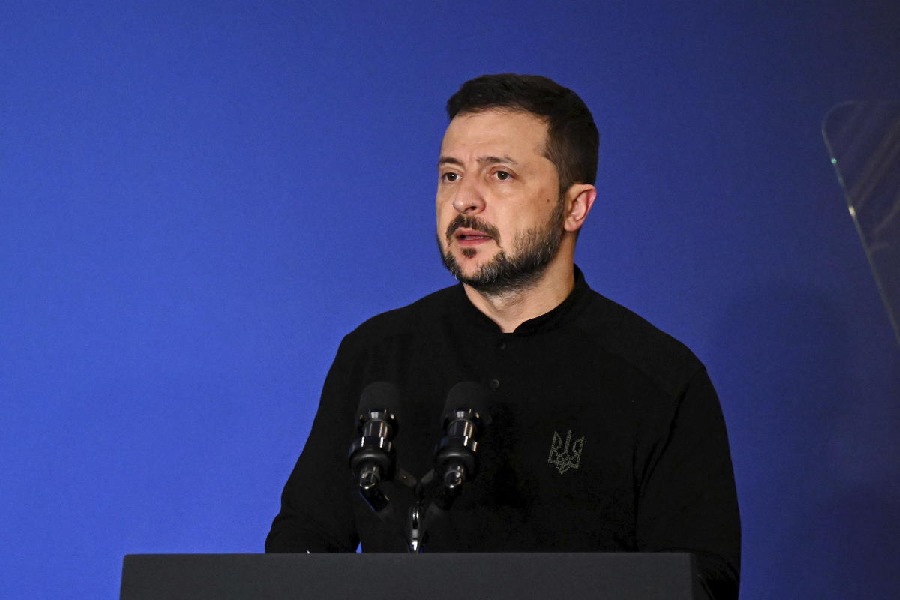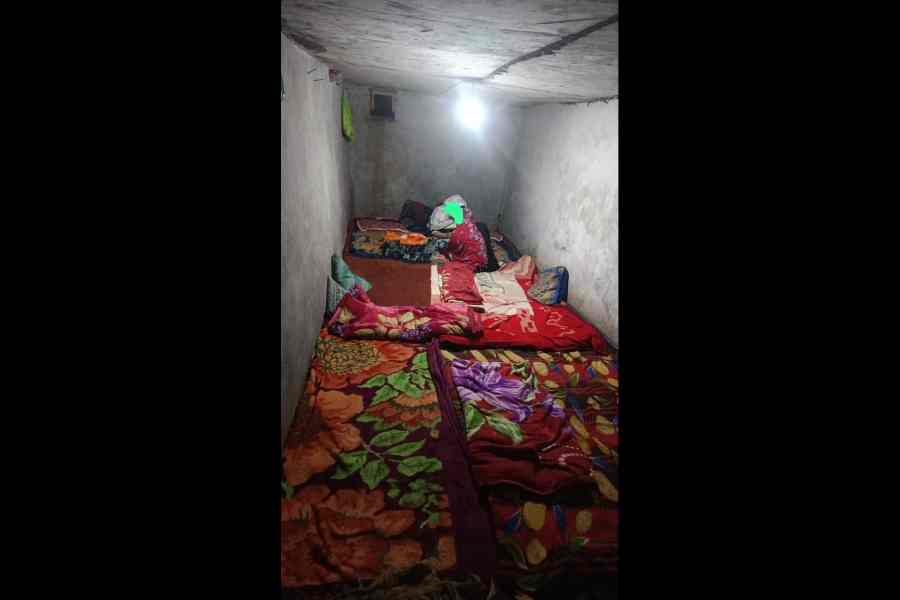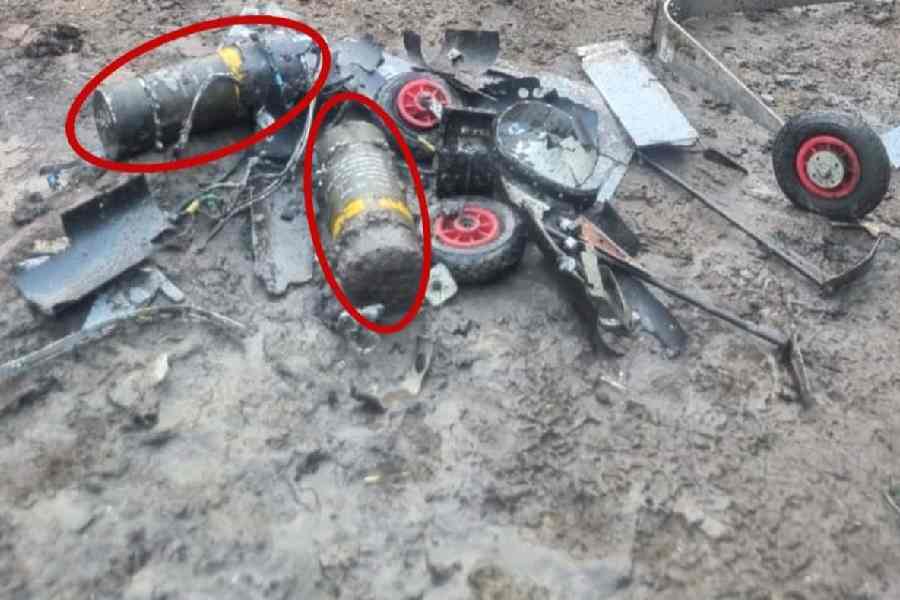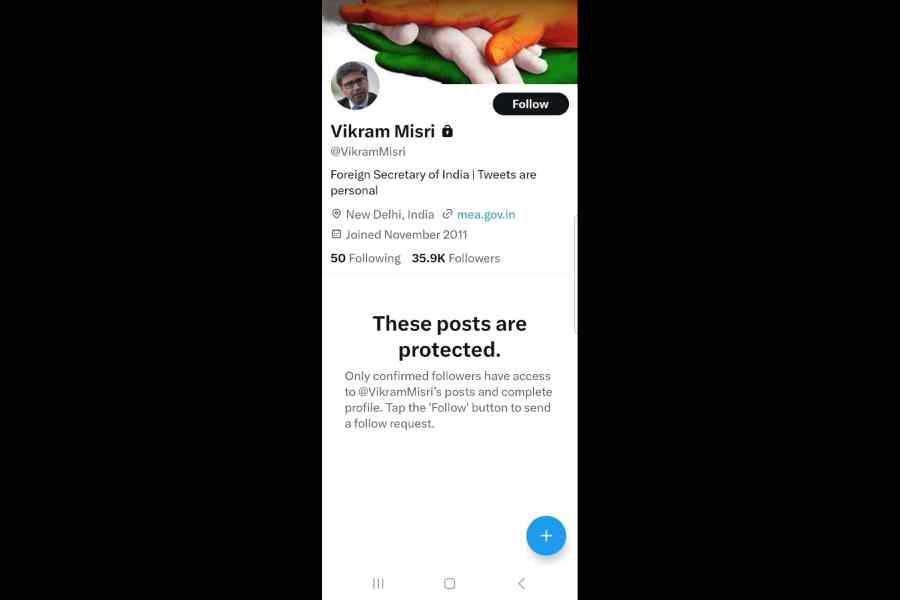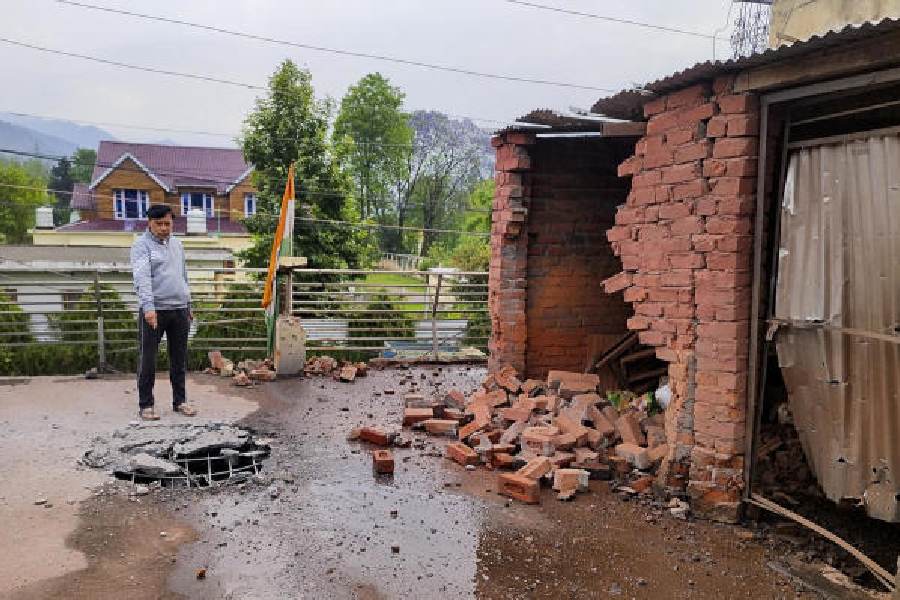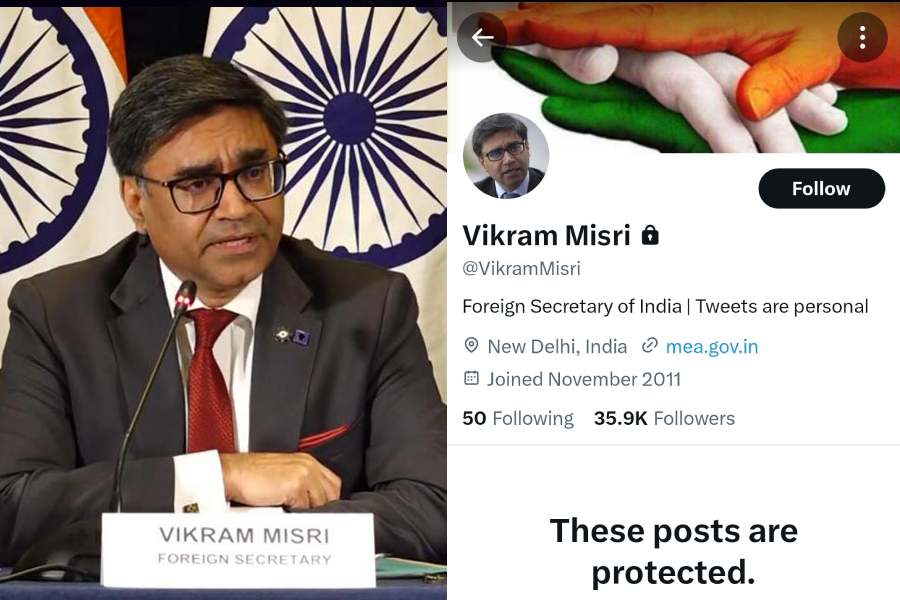 |
| Bhaskar Chitrakar paints a pata at the workshop. Picture by Mayukh Sengupta |
The cat sat with a large whiskered lobster in its mouth. In the mid-nineteenth century, several such cat and lobster compositions could be bought from patuas around Kalighat temple. It is said that the cat with a tilak on its forehead and a somewhat guilty expression represents the pious hypocrite or greedy priests. Perhaps one could even interpret it as a symbol of human failing for the exotic and forbidden.
But the cat and lobster drawn by Bhaskar Chitrakar at the Cones and Needles Banquet Hall of Siddha Pines, Rajarhat, was more a tool to communicate with Gen Y.
With deft brush strokes, Bhaskar Chitrakar drew smooth, flowing outlines of the cat and lobster in black. He embellished it with black spots and brisk thin lines. No colours were used as that would make it difficult for the young participants to replicate.
The children and the few parents — most of them residents of Siddha Pines — who had assembled that afternoon were excited to discover a new art form.
Krishna Chatterjee found it “beautiful” to sit painting with six-year-old daughter Asmita while Sapnali Bhattacharjee confessed she had picked up a brush after “10-12 years” and was determined to make the most of it.
Some participants took photographs of Bhaskar’s drawings on their cell phones and then tried copying them on paper while others gathered around Bhaskar, who met even the most ineffectual efforts with encouragement. “Even I used to make such mistakes once. The only way to get it right is to practise and practise and practise. All that I can do now is the result of hard practice.”
After pata painting, Bhaskar demonstrated how to make a Ganesh idol with clay.
The programme began with a lively quiz by Barry O’Brien where participants were asked to identify everything from Hindi film tunes to dokra craft.
On display at the venue were six paintings by Bhaskar, priced at Rs 3,000-4,000 each. Three of them were bought by residents.
Sanjay Jain, the managing director of the Siddha Group, described Siddha Live in Art as an “initiative to promote and preserve the indigenous art and craft of Bengal, especially those that have a long legacy but are now on the verge of extinction”.
“Up next is a workshop on Santhal wall-painting. Artists from Chandrakona, Midnapore, will be brought to demonstrate the skill,” said Saumi Nandi, an artist engaged by Siddha Group to curate such programmes.
Bhaskar Chitrakar, the new-age patua
• First strokes: Learnt his craft from his father and has been painting for
as long as he can remember.
• Style: A professional idol-maker, Bhaskar paints off and on in the old style that is both simplistic and vibrant.
• Favourite subjects: He presents traditional subjects like babus in dhotis and kurtas, bibis, cats, dogs and fish in new situations. The tongue-in-cheek humour characteristic of the old patas is not missing.
He often focuses on contemporary events and issues. He has painted Baba Ramdev, Anna Hazare, Osama bin Laden, Bill Clinton, Hillary Clinton and Gennifer Flowers. But he is wary of lampooning local politicians.
“You never know which party will
take offence. I live and work on the sidewalks and can’t afford to take risks,” the artist said.
• Right medium: Traditional powder earth colours along with good quality acid-free paper. “The old patuas used such cheap paper that they had to mount it on cloth to prevent it from tearing but I know how important the quality of paper is for a painting’s survival,” Bhaskar said.
• Going places: Has shown his works in Calcutta, London and other places.
“I can’t afford to book galleries but my admirers and buyers come to me, so I have to keep on painting,” he smiled.


